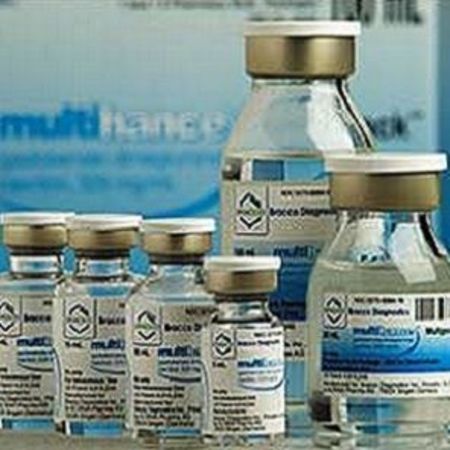A new study, published in the journal Investigative Radiology, indicates that repeated use of specific “linear”-type gadolinium-based contrast agents (GBCAs) — widely used for diagnostic MRI scans — can lead to deposits of the heavy-metal element gadolinium in the brain.
The findings could have a major impact on the multimillion-dollar market for MRI contrast agents, according to Investigative Radiology Editor-in-Chief Val M. Runge, MD, of University Hospital Zurich. He comments, “This important safety issue may lead to certain linear GBCAs not being used in the future.”
Researchers led by Philippe Robert, PhD, of the French pharmaceutical company Guerbet, conducted experiments in rats to evaluate the effects of repeated injections of GBCAs. Three groups of rats were involved in the experiments: over five weeks, one group received a series of 20 injections with gadodiamide (one of a class of agents known as “linear” GBCAs); another group was injected with a different type of GBCA — the “macrocyclic” agent gadoterate meglumine; and a third group received an inactive saline solution.
Over time, “significant and persistent” MRI abnormalities (called T1-weighted signal hyperintensities) developed in the brains of rats receiving the linear GBCA, gadodiamide. There were no MRI abnormalities detected in the brains of rats injected with the macrocyclic agent, gadoterate meglumine.
Notably, the increases in signal hyperintensity persisted even after the injections stopped. In subsequent examinations, high total gadolinium concentrations were measured in the deep brain (cerebellum) of gadodiamide-treated rats, corresponding to the area of the MRI abnormalities.
The findings support previous studies reporting T1 hyperintensities in human patients receiving multiple injections of linear GBCAs for MRI scans. “Certain of these agents lead to heavy-metal deposition in parts of the brain, which is not seen with the macrocyclic GBCAs,” says Dr. Runge, a pioneer in the development of chelated gadolinium as a contrast agent for MRI.
Gadolinium is the element employed as the basis of GBCAs, which have been widely used as MRI contrast agents for nearly three decades — with nearly 30 million doses given each year worldwide. “However, it is also a toxic heavy metal that is not a normal trace element in the body,” Dr. Runge points out.
Macrocyclic GBCAs were originally developed as a safer alternative to linear GBCAs. Based on the new findings, Dr. Runge predicts that certain GBCAs may soon fall out of use. A question raised by physicians is whether any patient, upon seeing these data, would want to be injected with the less stable agents.
Source: Wolters Kluwer Health
Image credit: Flickr.com
The findings could have a major impact on the multimillion-dollar market for MRI contrast agents, according to Investigative Radiology Editor-in-Chief Val M. Runge, MD, of University Hospital Zurich. He comments, “This important safety issue may lead to certain linear GBCAs not being used in the future.”
Researchers led by Philippe Robert, PhD, of the French pharmaceutical company Guerbet, conducted experiments in rats to evaluate the effects of repeated injections of GBCAs. Three groups of rats were involved in the experiments: over five weeks, one group received a series of 20 injections with gadodiamide (one of a class of agents known as “linear” GBCAs); another group was injected with a different type of GBCA — the “macrocyclic” agent gadoterate meglumine; and a third group received an inactive saline solution.
Over time, “significant and persistent” MRI abnormalities (called T1-weighted signal hyperintensities) developed in the brains of rats receiving the linear GBCA, gadodiamide. There were no MRI abnormalities detected in the brains of rats injected with the macrocyclic agent, gadoterate meglumine.
Notably, the increases in signal hyperintensity persisted even after the injections stopped. In subsequent examinations, high total gadolinium concentrations were measured in the deep brain (cerebellum) of gadodiamide-treated rats, corresponding to the area of the MRI abnormalities.
The findings support previous studies reporting T1 hyperintensities in human patients receiving multiple injections of linear GBCAs for MRI scans. “Certain of these agents lead to heavy-metal deposition in parts of the brain, which is not seen with the macrocyclic GBCAs,” says Dr. Runge, a pioneer in the development of chelated gadolinium as a contrast agent for MRI.
Gadolinium is the element employed as the basis of GBCAs, which have been widely used as MRI contrast agents for nearly three decades — with nearly 30 million doses given each year worldwide. “However, it is also a toxic heavy metal that is not a normal trace element in the body,” Dr. Runge points out.
Macrocyclic GBCAs were originally developed as a safer alternative to linear GBCAs. Based on the new findings, Dr. Runge predicts that certain GBCAs may soon fall out of use. A question raised by physicians is whether any patient, upon seeing these data, would want to be injected with the less stable agents.
Source: Wolters Kluwer Health
Image credit: Flickr.com
References:
Robert P et al. (2015) T1-Weighted Hypersignal in the Deep Cerebellar Nuclei After Repeated Administrations of Gadolinium-Based Contrast Agents in Healthy Rats: Difference Between Linear and Macrocyclic Agents. Investigative Radiology, June 22, 2015 doi:
10.1097/RLI.0000000000000181
Latest Articles
healthmanagement, MRI, diagnostic imaging, GBCA, contrast agents, gadolinium
A new study, published in Investigative Radiology, indicates that repeated use of specific “linear”-type gadolinium-based contrast agents (GBCAs) — widely used for diagnostic MRI scans — lead to deposits of the heavy-metal element gadolinium in the brain.



























